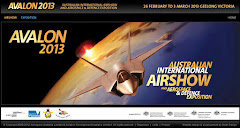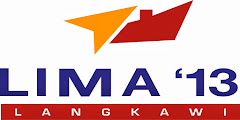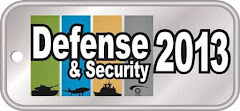11 Maret 2014
Hi-tech ... the Hobart Class Air Warfare destroyer. (image: News Corp Australia)
AN $8.5 billion taxpayer-funded “alliance’’ to build three hi-tech navy warships was a multi-tiered debacle, government auditors have found.
The Air Warfare Destroyer Alliance is running two years late, is $302 million over budget and is bleeding money at the rate of $1 million a week, according to well placed sources.
The auditors also revealed that the original premium for building the three ships in Australia rather than purchasing “off-the-shelf’’ overseas was $1 billion.
That is a 30 per cent taxpayer subsidy to the ship builders.
“The cost increase is likely to be significantly greater (than $302 million),’’ the document said.
The Australian National Audit Office (ANAO) report could spell the end for government ownership of the ASC shipyard in Adelaide and, according to government sources, it draws a line in the sand for the whole Australian naval shipbuilding industry.
“Defence and its industry advisers underestimated the risks associated with incorporating the design changes to Navantia’s F-104 design, exporting that design to Australia ... built at shipyards that lacked recent experience in warship building,’’ the audit report said.
The 320-page document slams the government’s defence purchasing agency, the Defence Materiel Organisation (DMO), and its management of an alliance that includes the government-owned Adelaide shipbuilder ASC and American defence giant Raytheon.
Under the alliance the DMO is both buyer and supplier.
“It was costing ASC, the lead ship builder, $1.60 to produce work that was originally estimated to cost $1,’’ the report said.
“It was not until 2013 that the Alliance put in place extensive key performance measures.’’
The Adelaide-based alliance began in 2007 and was the brainchild of the head of DMO Warren King.
The first ship, HMAS Hobart, was due for delivery to the navy this year but has been delayed until at least 2016.
The ships’ designer and hull-maker Spanish shipbuilder Navantia, the Melbourne-based block builder BAE Systems and the Newcastle-based Forgacs shipyard are all strongly criticised for a long list of failings, including dodgy block build practices and poor drawings.
The substandard drawings meant that many already installed watertight doors had to be moved 150mm so they could meet Australian safety standards.
One of the most damaging findings of the report appears on page 232 where the auditors reveal that 570 of 2,000 Chinese-made pipes were removed from the first ship, HMAS Hobart, because they were substandard and potentially dangerous.
“A supply chain failure led to the installation of defective pipes into the ship,’’ the report said.
The pipes were purchased by ASC — the company that wants to build the navy’s next generation submarine for more than $30 billion.
“They (ASC) haven’t done themselves any favours in justifying why they should build the new submarine,’’ a high-level source said.
The key lesson from the report is that Australian industry did not have the capability to undertake such a complex project.
This raises serious questions about whether or not governments should continue to prop-up Australian naval shipbuilders at high taxpayer premiums or buy off-the-shelf from more efficient overseas yards.
It is understood that the Abbott Government favours an Australian naval shipbuilding industry — but not at any cost.
The report was welcomed by Defence Minister David Johnston who agreed with its three recommendations to appoint a high-level project overseer and implement a new design review process and better performance monitoring.
KEY POINTS
* Air Warfare Destroyer two years late and $300 million over budget
* $1 billion premium for Australian build
* Risks under estimated
* ASC likely to be sold
* Naval shipbuilding under a cloud
(News)
Langganan:
Posting Komentar (Atom)











Tidak ada komentar:
Posting Komentar